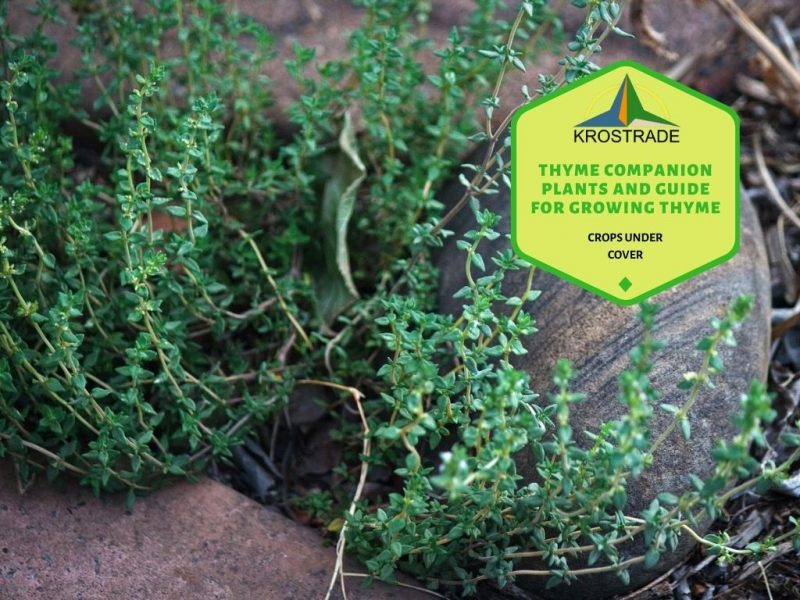The Ultimate Guide To Creeping Thyme Companion Planting
The Ultimate Guide to Creeping Thyme Companion Planting
Thyme is a versatile and fragrant herb that can be used in a variety of dishes, from soups and stews to salads and desserts. It is also a popular choice for companion planting, as it can help to repel pests and attract beneficial insects.
In this guide, we will discuss the benefits of companion planting with creeping thyme, as well as some of the best plants to grow alongside it. We will also provide some tips on how to plant and care for creeping thyme in your garden.
Benefits of Companion Planting with Creeping Thyme
There are many benefits to companion planting with creeping thyme. Here are a few of the most notable:
- Attracts beneficial insects: Thyme is a magnet for beneficial insects, such as ladybugs, lacewings, and hoverflies. These insects help to control pests in your garden, such as aphids, cabbage worms, and spider mites.
- Repels pests: Thyme also has a strong scent that can repel pests, such as cabbage moths, carrot flies, and slugs.
- Improves soil quality: Thyme is a nitrogen-fixing plant, which means that it helps to improve the nitrogen content of the soil. This can benefit other plants in your garden, as nitrogen is an essential nutrient for plant growth.
- Provides ground cover: Creeping thyme is a low-growing plant that can be used to provide ground cover in your garden. This can help to suppress weeds and keep the soil moist.
Best Plants to Grow with Creeping Thyme
There are many different plants that can be grown with creeping thyme. Here are a few of the best:
- Other herbs: Thyme is a good companion plant for other herbs, such as rosemary, oregano, and sage. These herbs all have similar growing conditions and can help to attract beneficial insects.
- Vegetables: Thyme can also be grown with vegetables, such as tomatoes, peppers, and eggplants. These vegetables benefit from the nitrogen-fixing properties of thyme.
- Flowers: Thyme can also be grown with flowers, such as marigolds, nasturtiums, and lavender. These flowers help to attract beneficial insects and can also help to deter pests.
How to Plant and Care for Creeping Thyme
Creeping thyme is a relatively easy plant to grow. Here are some tips on how to plant and care for it:
- Plant creeping thyme in full sun. It will tolerate some shade, but it will not grow as well.
- Plant creeping thyme in well-drained soil. It does not like wet feet.
- Water creeping thyme regularly, especially during the first year of growth. Once established, it is more drought-tolerant.
- Fertilize creeping thyme once a year in the spring with a balanced fertilizer.
- Deadhead creeping thyme regularly to encourage new growth.
Conclusion
Creeping thyme is a versatile and easy-to-grow herb that can be used in a variety of ways. It is also a great companion plant for many other plants, both herbs and vegetables. If you are looking for a way to improve the health and productivity of your garden, consider adding creeping thyme to your planting plan.
Creeping thyme is a versatile herb that can be used in cooking, as a ground cover, or even in aromatherapy. But did you know that there are certain plants that can benefit from being planted near creeping thyme?
That's right, companion planting is a great way to boost the growth and health of your garden plants. And when it comes to creeping thyme, there are a few specific plants that make great companions.
For example, rosemary and lavender are both Mediterranean herbs that share similar growing conditions with creeping thyme. They also both release chemicals that repel pests, which can help to protect your creeping thyme plants from damage.
Other good companion plants for creeping thyme include tomatoes, strawberries, and eggplants. These plants all benefit from the insect-repelling properties of creeping thyme, and they can also help to improve the drainage and aeration of the soil.
If you're interested in learning more about creeping thyme companion plants, I recommend visiting Garden Wiki. This website has a comprehensive list of plants that can be grown with creeping thyme, as well as detailed information about the benefits of companion planting.
Image of creeping thyme companion plants
- Rosemary: Rosemary is a Mediterranean herb that is closely related to thyme. It has a strong, piney scent that can help repel pests. Rosemary and thyme can be planted together in a herb garden or in a flower bed.

- Lavender: Lavender is another Mediterranean herb that is a good companion for thyme. It has a sweet, floral scent that can help attract pollinators. Lavender and thyme can be planted together in a herb garden or in a flower bed.

- Sage: Sage is a hardy herb that can tolerate hot, dry conditions. It has a strong, peppery scent that can help repel pests. Sage and thyme can be planted together in a herb garden or in a vegetable garden.

- Shallots: Shallots are a type of onion that is a good companion for thyme. They can help to improve the flavor of thyme and they can also help to repel pests. Shallots and thyme can be planted together in a vegetable garden.

- Potatoes: Potatoes are a good companion for thyme because they have different growing requirements. Thyme does not need as much water as potatoes, so they will not compete for water. Thyme can also help to repel pests from potatoes.

Post a Comment for "The Ultimate Guide To Creeping Thyme Companion Planting"